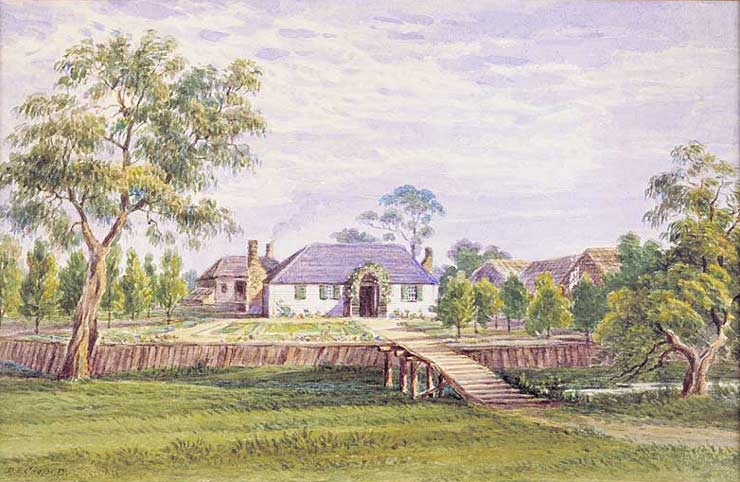 Third hut at Challicum, 1845
Third hut at Challicum, 1845
TLF ID R3311
This is a watercolour by Duncan Cooper that depicts the third hut built at Challicum, a sheep run west of Ballarat in western Victoria. It shows a weatherboard hut or cottage with an established garden surrounded by a palisade (paling fence). A wooden bridge, which spans a creek, joins a pathway that leads to the front door of the cottage. An arched and rose-covered trellis frames the doorway. The watercolour measures 15.5 cm x 23.7 cm and Cooper inscribed the words 'No. 4 Challicum, 3d hut, 1845' on the mount.
